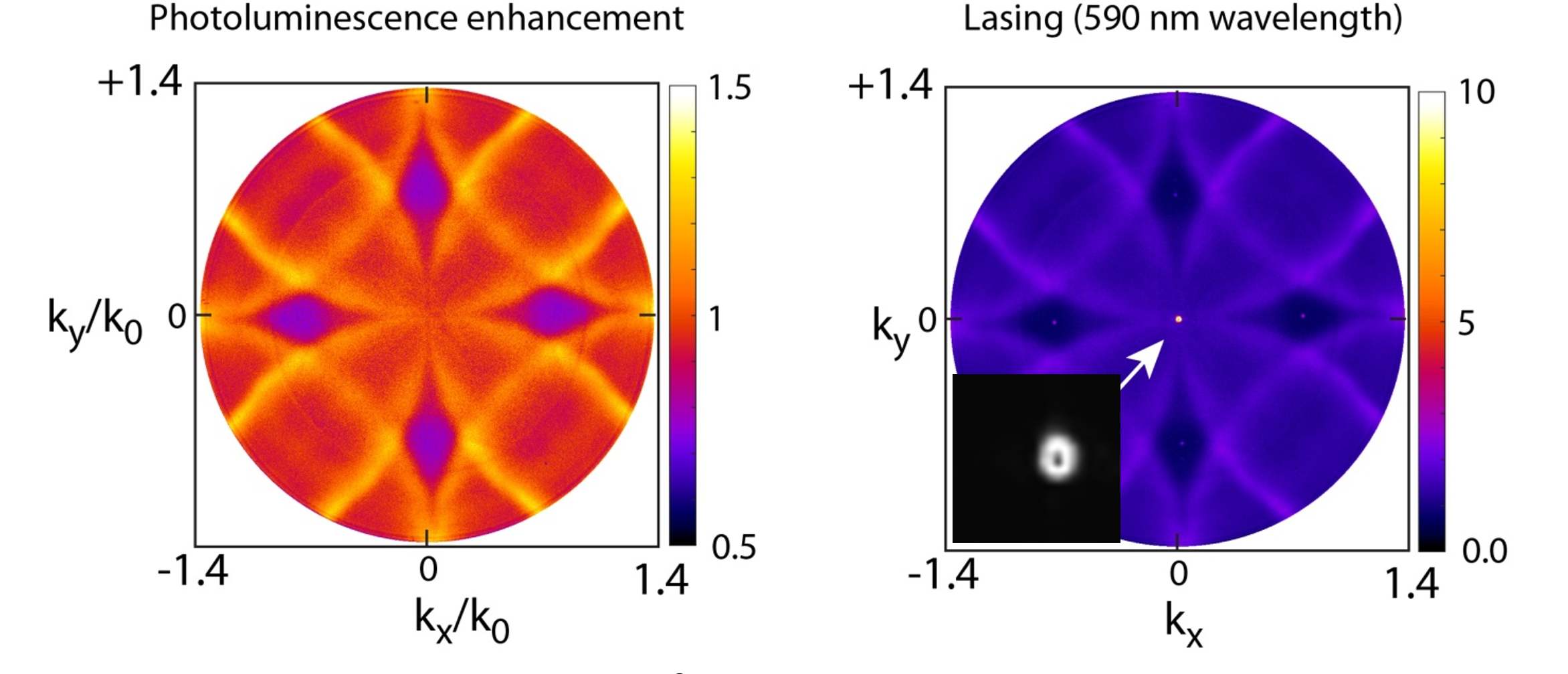Phased arrays and plasmon lasers
Most of the sources of light that nature provides are electronic transitions in atoms and molecules. This means that elementary emitters of photons are by themselves deeply subwavelength in size, almost pointlike. As consequences quantum emitters that emit single photons are not very bright, and their emission is not very directional. There are several techniques that allow for quantum emitters emit more light per unit of time, and to make them do so in just one preferred spatial mode. These generally rely on narrowband dielectric microcavities, or on plasmon nano-antennas that provide strong field enhancement. In a recent review paper, we outlined the different merits and drawbacks of plasmon antennas for single photon sources as summarized by the figure below.

In our work, we mainly focus on phased array antennas, as opposed to high-local-field antennas. Phased arrays are arrays of radiating elements which are phase shifted with respect to each other. For optical phase array antennas the building blocks are large metal particles. These provide strong scattering as metal particles provide very large polarizability in a small volume, and thereby very large resonant scattering cross sections. When cleverly arranged, oligomers of such strongly scattering particles will make emitters radiate in a strongly directive fashion. A single driving emitter will excite plasmon resonances in all the antenna particles around it, which also can strongly drive each other. When done correctly, the induced currents in all the antenna particles will constitute a strongly directional source by interference that is controlled through geometry. The most famous example is the plasmon Yagi-Uda antenna for beaming along the antenna axis. More practical examples are hole array antennas, and periodic lattice antenna structures for directing light out of plane. In our group we have performed intense studies on all these types of antennas, asking ourselves how to integrate them with a controlled number of emitters (missing reference), how to measure radiation patterns how to trade off geometry, bandwidth, directionality and loss, and how to integrate phased arrays in cavities and waveguides.



